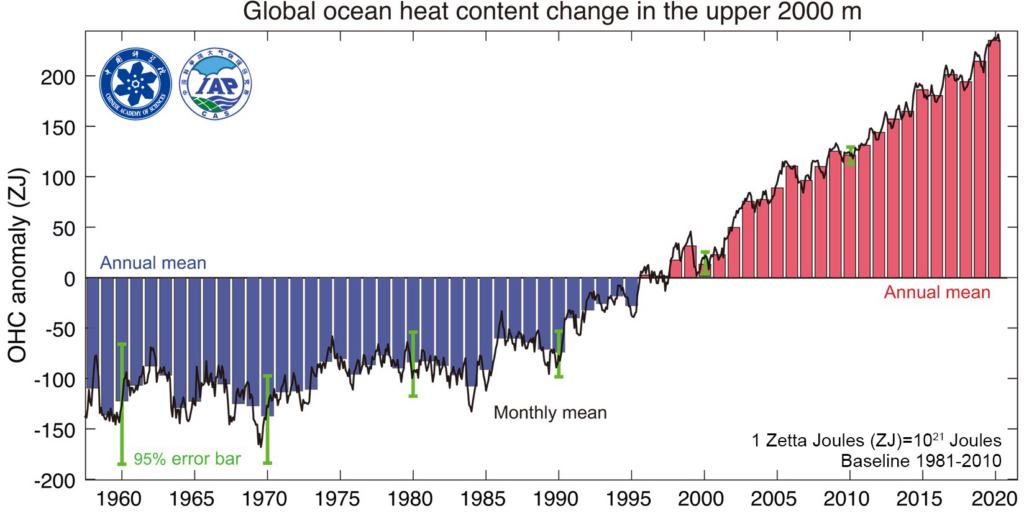
Since the industrial revolution, the emission of greenhouse gasses by human activities has been mainly responsible for global warming. This increased concentration of greenhouse gases in the atmosphere has caused an energy imbalance in the Earth’s climate system, with the world’s oceans absorbing 90% of this excess heat. This has led to an increase in ocean heat content (OHC) and sea level rise. In 2000, Levitus et al. developed the first global OHC time series, identifying a robust long-term ocean warming from 1948-98. Since then, many other analyses of global and regional OHC data have been performed.
This month, ESSIC/CISESS scientists Jim Reagan and Alexey Mishonov co-authored an article published in Advances in Atmospheric Sciences that provides the first analysis of recent ocean heating, incorporating measurements through 2020. This research was conducted by an international team of scholars.
Using state-of-the-art data products made available by the Institute of Atmospheric Physics of the Chinese Academy of Sciences (IAP) and the National Centers for Environmental Information of the National Oceanic and Atmospheric Administration (NCEI), the researchers calculated ocean temperature and salinity anomalies in the upper 2,000 meters of the ocean.
They found that the OHC of the World Ocean has increased with a mean rate of 5.7 ± 1.0 ZJ yr−1 for the 1958−2020 period. Within that period, there is a rapid increase in OHC that began in the 1980s and has since continued unabated. From 1986 to 2020, the trend in OHC is 9.1 ± 0.3 ZJ yr−1, almost eight times larger than the trend from 1958 to 1985 (1.2 ± 0.6 ZJ yr−1), while the estimates of uncertainty have decreased as instruments and analyses improved. The OHC value for 2020 is higher than the value for 2019 by 20 ± 8.3 ZJ using the IAP estimate, and by 1 ± 3.5 ZJ using the NCEI estimate. Both are the highest on record. Differences between the IAP and NCEI OHC values reflect the uncertainties in the calculation due to method and data coverage. OHC values herein are preliminary and will be augmented by ocean profile data which are not immediately available at the end of the year (but added later), and by calibration and quality control processes which also occur on longer time scales.
“By uptaking ~90% of anthropogenic heat and ~30% of the carbon emissions, the ocean buffers global warming,” write the authors in the paper, “However, the associated ocean response also poses a severe risk to human and natural systems.”
Rising ocean temperatures present many threats, including thinning sea ice, rising sea levels, and bringing more natural disasters.
“In 2020, as more countries pledge to achieve “carbon neutrality” or “zero carbon” in the coming decades, the ocean should receive special attention,” the researchers write.
Mishonov is a researcher with extensive experience in various fields of oceanography, including ocean color, water transmissivity and particulate organic carbon study, oceanographic data management, analysis, and climate research.
Reagan is affiliated with NOAA and the National Centers for Environmental Information (NCEI) where his current research focuses on attaining a better understanding of salinity/freshwater variability in the global ocean, which could shed new light on the hydrological cycle.
To access the article, click here: “Upper Ocean Temperatures Hit Record High in 2020”.





